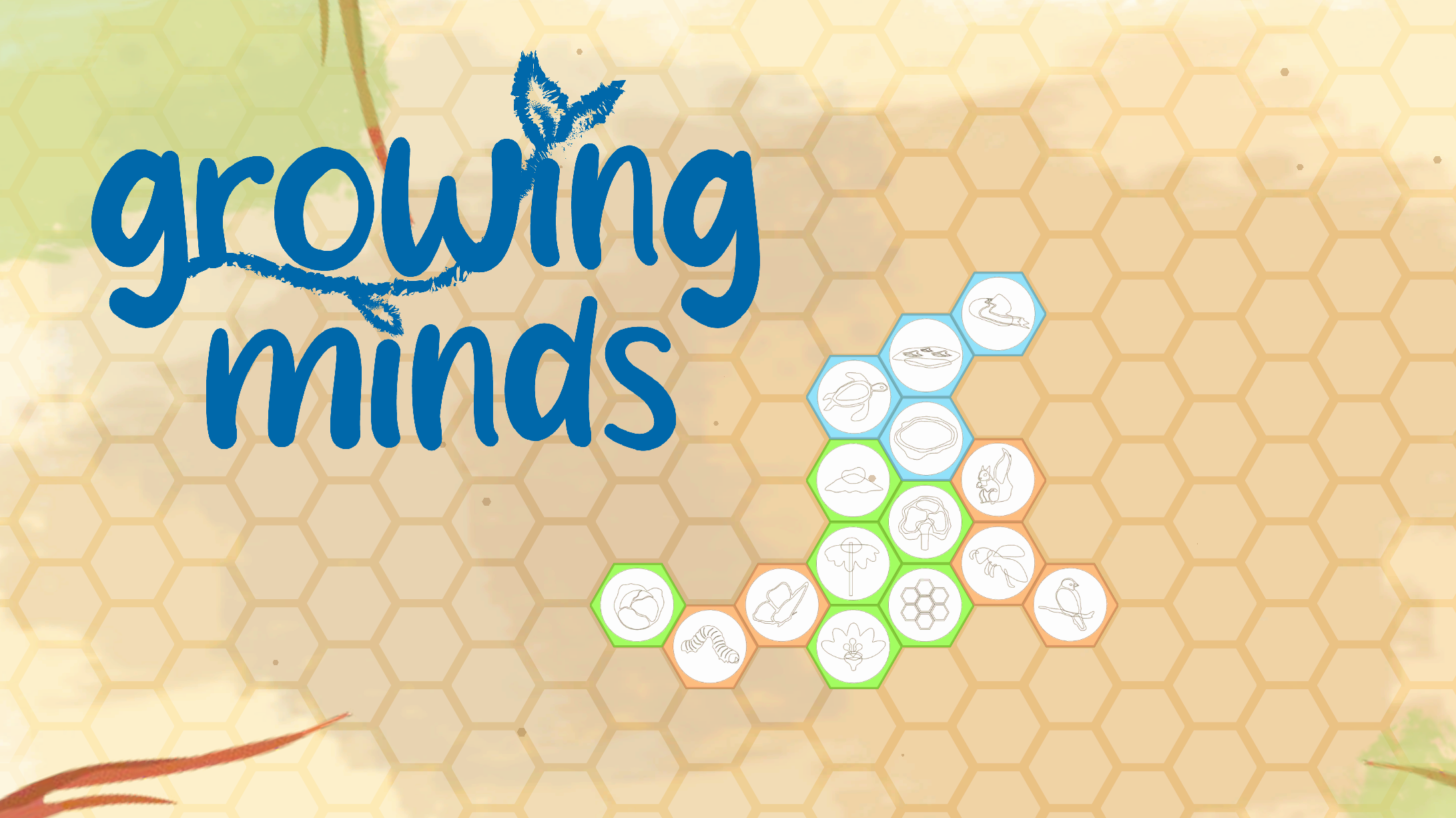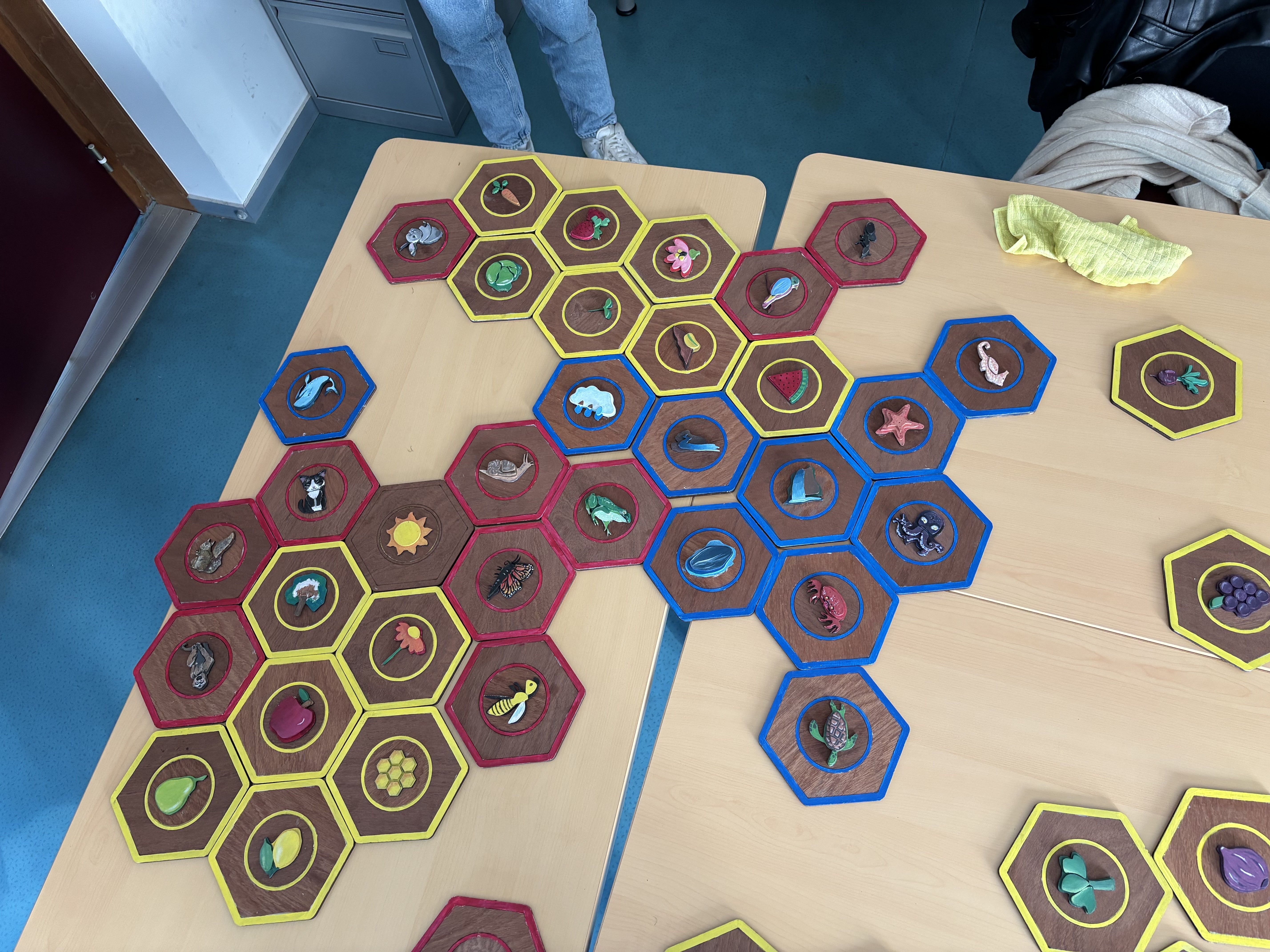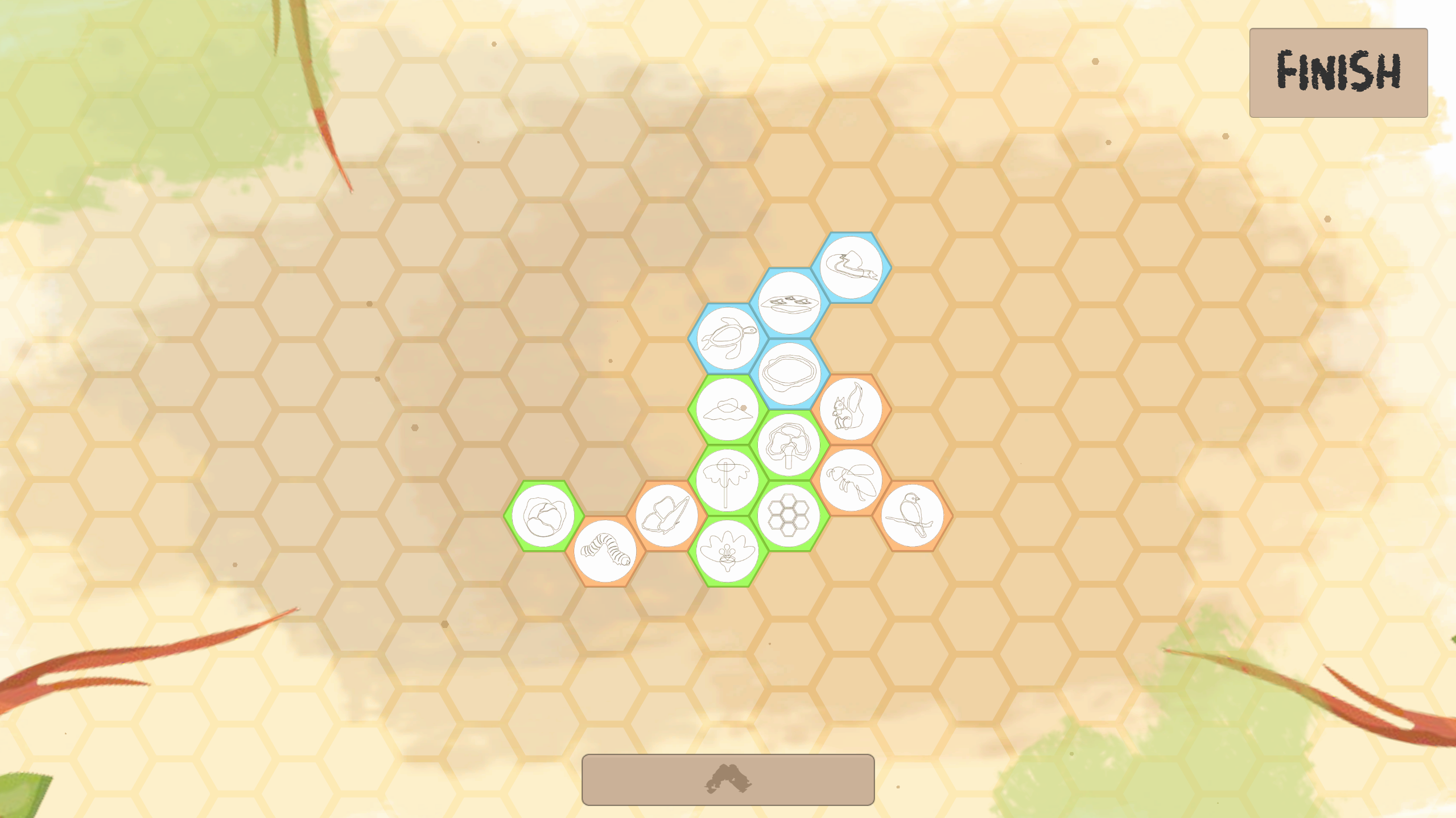🌱 Growing Minds Game — Serious Game for Children on Biodiversity

Table of Contents
🌱 Project Overview
This project was carried out as a group project of 3 students in the context of research on serious games and the digitalization of educational tools.
The objective was to bring an existing board game about biodiversity into a digital format using Unity, while preserving its collaborative and educational nature.
The original board game "Growing Minds" was created by Saumya Grover and Nimet Hüma Sabirli. After being tested in schools worldwide, the authors sought to explore digitalization as a way to broaden its reach and integrate it into modern learning environments.
Our challenge was to ensure that the playful, outdoor, and collaborative benefits of the original were preserved in the digital version.
The project was conducted under the supervision and guidance of:
- Hui-Yin Wu (Professor, Inria)
- Pauline Devictor (Research & Project Supervisor)
This project is not available for public use. It is presented here as part of my portfolio to highlight my role in managing the entire Unity project and its technical implementation.
🎮 The Game
The digital version reimagines the board game with mechanics adapted to mobile platforms (Android & iOS):
- Players begin with an initial tile and connect additional tiles to build an ecosystem.
- Tiles represent animals, plants, or natural elements.
- Connecting tiles reveals rules that grant points.
- Example: Connecting a Bee tile with a Honey tile unlocks the rule: “the bee makes honey”.
- Even when no explicit rule exists, connecting tiles with thematic links (e.g., animals or plants) still grants points.
- Teachers can also define custom rules, making the experience flexible for classroom use.
The project successfully translated the serious game into a digital environment, offering children an interactive, collaborative, and educational experience.
👩💻 My Role
I was responsible for managing the entire Unity project:
- Building the game structure and ecosystem-connection mechanics.
- Implementing scoring and dynamic rules.
- Overseeing deployment to iOS and Android.
- Coordinating contributions within the group.
This role strengthened my skills in Unity, C# development, mobile deployment, and serious game design.
📸 Gallery
📚 References
[1] Swink, S. (2009). Game Feel: A Game Designer's Guide to Virtual Sensation (1st ed.). CRC Press.
https://www.taylorfrancis.com/books/mono/10.1201/9781482267334/game-feel-steve-swink
[2] Zhou, H., & Forbes, A. G. (2022). Data Feel: Exploring Visual Effects in Video Games to Support Sensemaking Tasks. IEEE VIS4DH.
https://ieeexplore.ieee.org/abstract/document/9974787
[3] Fjællingsdal, K. S., & Klöckner, C. A. (2019). Gaming Green: The Educational Potential of Eco – A Digital Simulated Ecosystem. Frontiers in Psychology, 10:2846.
https://www.frontiersin.org/articles/10.3389/fpsyg.2019.02846/full
[4] Ferreira, S. M., Gouin-Vallerand, C., & Hotte, R. (2016). Game Based Learning: A Case Study on Designing an Educational Game for Children in Developing Countries. IEEE VS-GAMES.
https://ieeexplore.ieee.org/abstract/document/7590350
[5] Lo, J. J., Ji, N. W., Syu, Y. H., You, W. J., & Chen, Y. T. (2008). Developing a Digital Game-Based Situated Learning System for Ocean Ecology. In Transactions on Edutainment I. LNCS vol 5080. Springer.
https://link.springer.com/chapter/10.1007/978-3-540-69744-2_5
[6] Diniz dos Santos, A., Strada, F., & Bottino, A. (2018). Approaching Sustainability Learning Via Digital Serious Games. IEEE Transactions on Learning Technologies.
https://ieeexplore.ieee.org/abstract/document/8417451
[7] CEECD (2023). Child’s Play: Learning that Comes Naturally.
https://www.child-encyclopedia.com/pdf/synthese/play
[8] Kosa, M., Yilmaz, M., O'Connor, R., & Clarke, P. (2016). Software Engineering Education and Games: A Systematic Literature Review. Journal of Universal Computer Science, 22(12).
https://doras.dcu.ie/21648/1/jucs_22_12_1558_1574_kosa.pdf
[9] Shahid, S., Krahmer, E., Swerts, M., & Mubin, O. (2010). Child-robot Interaction During Collaborative Game Play: Effects of Age and Gender on Emotion and Experience. OZCHI '10.
https://dl.acm.org/doi/abs/10.1145/1952222.1952294
[10] Parker, R., & Thomsen, B. S. (2019). Learning Through Play at School.
https://research.acer.edu.au/cgi/viewcontent.cgi?article=1023&context=learning_processes
[11] Play Facilitation: The Science Behind the Art of Engaging Young Children. (University of Helsinki, 2020).
https://helda.helsinki.fi/server/api/core/bitstreams/aace01a3-7af6-4791-a502-35940d67a07c/content
[12] Ceka, A., & Murati, R. (2016). The Role of Parents in the Education of Children. Journal of Education and Practice, 7(5).
https://eric.ed.gov/?id=EJ1092391
[13] Claire (2021). The Role of Play in Forest School.
https://wildlings.sg/post/the-role-of-play-in-forest-school
[14] Thomsen, B. S. (2019). Learning Through Free Play, Guided Play, Games and Instruction.
https://www.linkedin.com/pulse/learning-through-free-play-guided-games-instruction-thomsen/

